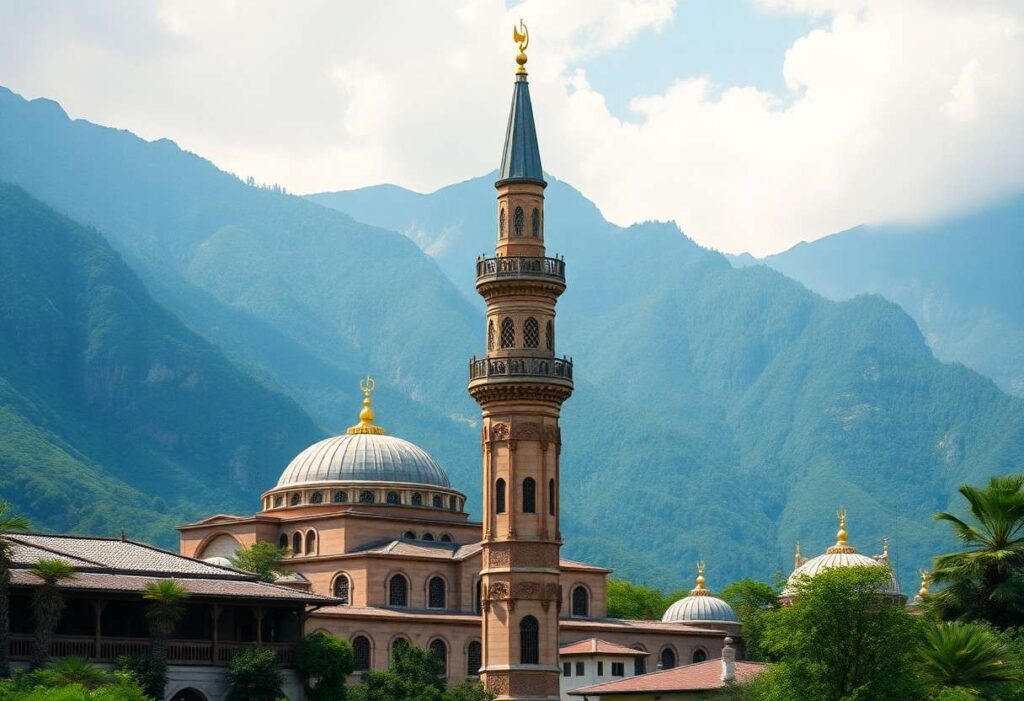Minarets & Mountains: A Spiritual Journey Through Islamic Heritage
Just imagine standing beneath a towering minaret, its ornate carvings etched against a backdrop of snow-capped mountains. This isn’t just a vacation — it’s a pilgrimage of the soul, a journey into the heart of Islamic art, architecture, and history.
Exploring Islamic heritage through travel offers an unparalleled chance to immerse yourself in centuries of tradition, creativity, and spirituality. Whether you’re wandering the alleys of Marrakech or tracing the silhouette of domes in Istanbul, every step echoes the legacy of a civilization built on beauty, purpose, and devotion.
The Minaret: More Than a Call to Prayer
Minarets aren’t just architectural features — they’re spiritual beacons. Historically used to announce the adhan (call to prayer), these towers also symbolize the centrality of faith in Islamic life. Their design, which evolved over time, reflects both religious devotion and regional artistry.
Istanbul’s Skyward Elegance
In Istanbul, the skyline is pierced with the elegant spires of mosques like the Blue Mosque and Hagia Sophia. Standing beneath their minarets, you’ll notice intricate Iznik tilework, marble calligraphy, and domes that seem to float in the sky. These details aren’t mere decoration — they’re spiritual storytelling etched in stone and glaze.
As you tour Istanbul, be sure to explore the Süleymaniye Mosque, where Ottoman craftsmanship reaches its zenith, and the Rustem Pasha Mosque, a hidden gem rich in visual serenity.
Morocco’s Koutoubia Mosque: A Tower Through Time
Travel southwest to Marrakech, Morocco, and you’ll find the Koutoubia Mosque. Its 12th-century minaret, built in the Almohad architectural style, dominates the medina with grace and gravitas.
A Sensory Experience
Don’t just marvel from afar. Settle into a nearby riad café and enjoy a dish of tagine or harira, letting the flavors transport you. As the sun sets over the Atlas Mountains, the call to prayer floats through the air — a reminder of how faith and landscape merge in this timeless city.
Jordan’s Petra: Echoes of a Desert Civilization
Islamic heritage also lives in the landscapes — the deserts, mountains, and valleys that shaped early Muslim societies. One of the most profound examples of this harmony is Petra in Jordan, a UNESCO World Heritage Site.
Walking Through Time
As you pass through the Siq, the narrow gorge leading to Petra’s heart, the rose-red walls whisper stories of ancient traders, empires, and spiritual resilience. Though pre-Islamic, Petra remains significant in the broader story of the region — a gateway to understanding the roots of Islamic culture, adaptation, and architecture.
Hospitality: The Soul of Islamic Culture
While minarets and ancient cities draw your eyes upward and inward, the people you meet on your journey will touch your heart.
Sharing Tea and Stories
From sipping mint tea in a Bedouin tent to participating in local festivals, the hospitality of Muslim communities is as much a part of heritage as any mosque. You’ll encounter calligraphy workshops, Qur’an recitation gatherings, and even spiritual poetry circles — each offering a window into Islamic life lived fully and warmly.
Hiking the Sacred: Nature as a Spiritual Teacher
Many regions with Islamic heritage are surrounded by breathtaking natural beauty that invites reflection and gratitude.
Sacred Peaks and Serenity
In Iran’s Alborz Mountains or near the Karakoram range in Pakistan, hiking becomes a form of meditation. Tiny villages with centuries-old mosques await you, where Sufi traditions and local crafts continue to thrive.
This blend of spirituality and nature invites travelers to slow down, to breathe deeply, and to connect inwardly.
A Journey That Transforms
Traveling through Islamic heritage is more than sightseeing — it’s soul-seeing. You’re not only discovering architectural wonders and rich histories, but also connecting deeply with Islamic values, traditions, and the diverse ummah that upholds them.
So yes, pack your bag and bring your camera. But more importantly, carry an open heart. Every stone, every story, every shared meal is a reminder of the divine beauty that surrounds us — if we choose to look closely.


